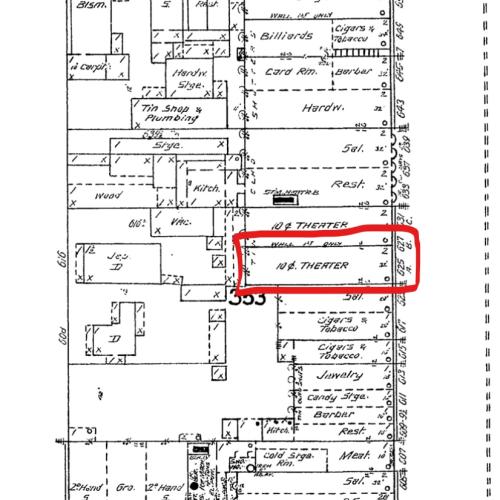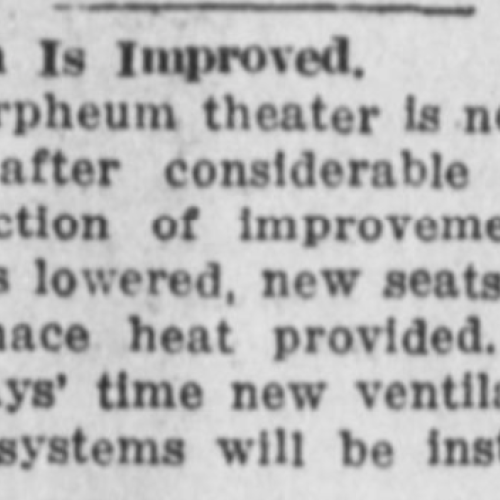The earliest mention of the Orpheum Theater in Pendleton Oregon comes from the East Oregonian newspaper on November 11, 19081. It remained open for seven and a half years, as it was sold and the name changed on April 22, 19162. With all the competition and frequent closing of theaters at the time, staying open for over seven years is quite impressive. The Orpheum was a fairly large theater, with 500 seats3. It went through three owners in the seven and a half years it was open, initially being opened by J.P. Medernach. When he fell ill and passed away ownership went to his son, Dr. Harry Medernach4. That was in 1914, and just a few years later Medernach sold the Orpheum to Frank Greulich, who only a few months later sold half of it and the name was changed2, 5. That was the last mention of the Orpheum in the East Oregonian although it stayed open with the new name for a time.
The theater was located right on Main Street, with a prime location to entice an audience to come in to see a show6. There were more than just motion pictures shown at the Orpheum. It also offered things like illustrated lectures, vaudeville shows, and live orchestra performances7, 8, 9. In one article advertising the theater, it was mentioned that it would always “cater to the patronage and good will of the ladies and children” as well as “only the best of clean, educational, and pleasing films”10. It is clear that the owner wanted to attract all audiences and make sure the theater was an ideal place for families to go to. While the Orpheum was not involved in very many promotions, one way the theater made itself more appealing was by improving the area around it. When J.P. Medernach was the owner, he oversaw the addition of cement sidewalks and streetlamps outside, helping to add to not only the theater but the city as a whole11, 12. And later, when his son Harry was the owner, he improved the inside of the theater to add things like new seats and furnace heating13. These actions helped integrate the theater into the community and make sure people knew that it was a desirable location.



